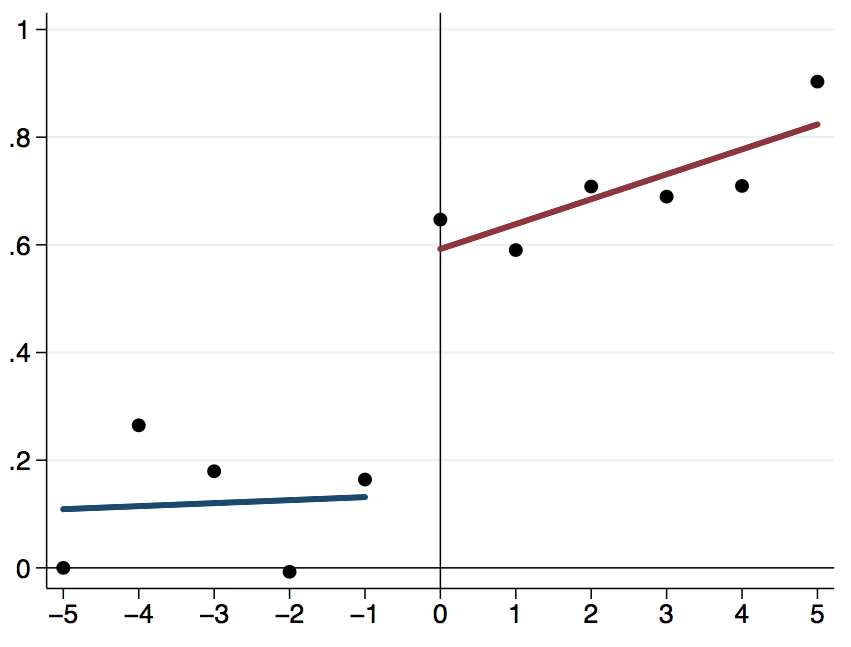Economics of Science
Within the economics of science, I study the determinants of collaboration, and in particular how geographic and social proximity impact the formation of new collaborative ties and the diffusion and vetting of new knowledge.
THE ROLE OF GEOGRAPHIC AND SOCIAL PROXIMITY
Collaboration networks play an important role in the generation, recombination and selection of novel ideas in the context of scientific discovery and technology commercialization. But how are new collaborative ties established? Exposure through colocation is often considered the key mechanism through which new collaborations are formed. At the same time, estimating the causal effect of geographic proximity on scientific outcomes has proven elusive, since individuals and organizations, anticipating the role microgeography will play in their allocation of time and in defining the opportunities they will have access to, pay close attention to location decisions. In such contexts, the endogenous sorting of individuals with similar characteristics and research interests into the same location makes it extremely difficult to separate selection from treatment.
MICROGEOGRAPHY AND THE DIRECTION OF INVENTIVE ACTIVITY
"Colocated labs engage in research that is 1.36 times more likely to lead to a breakthrough"
Catalini, C. (2017) "Microgeography and the Direction of Inventive Activity",
Management Science
Management Science
(2017) 10.1287/mnsc.2017.2798
In the paper, I exploit a natural experiment to estimate the causal impact of proximity on the probability, quality and type of scientific collaborations, finding effects on both the rate and direction of innovation. After colocation, scientists are 3.5 times more likely to collaborate, an effect that is driven by labs that faced higher search costs ex-ante. Separating labs with past collaborative ties, moreover, does not decrease their collaboration rates, i.e. once a tie exists, individuals can compensate for geographic distance. Knowledge flows instead are more sensitive to changes in proximity: While colocated labs grow increasingly similar in the knowledge they draw on, separated ones grow apart. Proximity also profoundly changes the degree of experimentation and the types of projects being pursued, with colocated labs engaging in higher variance research that is 1.36 times more likely to produce a breakthrough. The paper highlights how by allocating space, organizations deeply influence the degree of exploration versus exploitation that different teams will engage in. It also shows how scientific communities, also as a result of endogenous space assignment, can become an obstacle to high-impact idea recombinations that require collaboration across them.
The paper was awarded the "Wiley Blackwell Outstanding Dissertation Award in Business Policy and Strategy".
THE INCIDENCE AND ROLE OF NEGATIVE CITATIONS IN SCIENCE
With Alex Oettl and Nico Lacetera
Whereas colocation - whether temporary or not - is disproportionately responsible for idea recombinations between scientists that belong to the same communities or institutions, diffusion through publication should theoretically be less constrained by pre-existing relationships. Nevertheless, since journal rankings and citation counts are extensively used to allocate attention, diffusion through peer-review is still subject to substantial frictions.
"negative citations may indeed play a
special role in science"
In the paper we test how effective citations are at carrying information by focusing on citations that limit or challenge past findings. After identifying such "negative citations" using natural language processing techniques, we explore whether papers that are negatively cited actually incur a citation penalty or not. Once we accurately match them with control papers of similar quality, we do not observe a decay in their citation rates, possibly because most negative citations go unnoticed, take a long time to diffuse, or are part of the natural evolution of science. In the paper, we discuss how online repositories such as Google Scholar or PubMed could use our approach to facilitate the discovery of related but conflicting information, accelerating the process through which scientific knowledge is improved upon over time.
DID CHEAPER FLIGHTS CHANGE THE GEOGRAPHY
OF SCIENTIFIC COLLABORATION?
With Christian Fons-Rosen and Patrick Gaule
In the paper, we expand on the question of how distance affects scientific collaborations by building a comprehensive dataset of career and publication histories of all US faculty in chemistry over 20 years. We then rely on a difference-in-differences approach to estimate the effect of shocks to travel costs between regions on the rate and type of long-distance collaborations scientists engage in. After the drop in prices induced by the entry of a low cost airline on a given route, scientific collaboration increases by 30%, an effect that is magnified when weighting output by quality. By expanding our analysis to over one million articles, we also replicate this finding within biology, physics and engineering. The benefits from the cheaper fares, however, are not uniform across scientists: Younger scientists, scientists with smaller budgets, and researchers that are more productive than their local peers respond the most. Overall, the evidence is consistent with the reduction in travel costs allowing scientists to sustain and intensify better collaborations over distance.
"Younger scientists, scientists with smaller budgets, and researchers that are more productive than their local peers respond the most."
Tracing the linkages between science and technology:
An exploratory analysis of the research networks
among scientists and inventorS
Research Policy
(2010) Volume 39, Issue 1, pp. 14-26
With Stefano Breschi
In the paper, we study the interactions between the networks of co-authorship and co-invention in science-intensive fields, and focus on the individuals (authors-inventors) that facilitate knowledge transfer between academic science and corporate R&D. The paper - one of the first to use large scale data on scientific references cited in patents - highlights the challenges of simultaneously holding a key position in both communities, and shows how the scarcity of bridging scientists in Europe relative to the US can explain the lower levels of technology transfer observed in the old continent.






